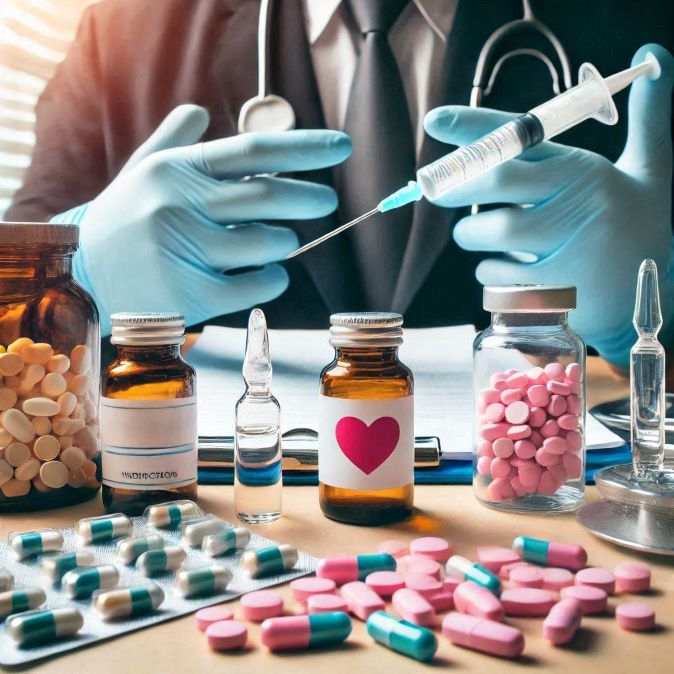Steroid Use and Recovery: Managing Side Effects

Steroid use can have severe physical and mental side effects, ranging from hormonal imbalances to mood disorders. Recovery from these effects requires a structured approach, combining medical guidance and health rehabilitation techniques. Understanding how to manage the aftermath of steroid use is crucial for rebuilding strength and achieving long-term wellness.
The Role of Rehabilitation in Recovery
Rehabilitation plays a vital role in addressing the consequences of steroid use. Many users turn to anabolic steroids to enhance physical performance or appearance but often face issues like liver damage, cardiovascular strain, and psychological challenges. Professional guidance from healthcare providers is essential for recovery. PGAnabolics (https://pganabolics.is) offer valuable insights and treatments to mitigate these effects and support sustainable recovery.
Physical Side Effects and Rehabilitation
Steroid use can lead to significant physical damage. Common issues include:
- Liver toxicity: Prolonged use can strain the liver, leading to potential failure.
- Hormonal disruption: Steroids may suppress natural hormone production, affecting testosterone levels in men and estrogen in women.
- Cardiovascular risks: Increased blood pressure and cholesterol levels are common concerns.
Rehabilitation programs often include liver detoxification therapies, hormone replacement treatments, and cardiovascular fitness regimens to restore physical health. A balanced diet rich in antioxidants, vitamins, and lean proteins is also crucial in aiding the body’s recovery.
Sustainable Fitness Routines for Physical Recovery
Creating a fitness plan that doesn’t rely on steroids is essential for recovery and long-term health. Start with low-impact exercises like walking, swimming, or yoga. These activities build endurance and restore joint mobility without overstraining the body. Gradually incorporate strength training under professional guidance, focusing on proper technique and avoiding heavy loads initially.
Regular exercise improves cardiovascular health, strengthens muscles, and boosts mood through endorphin release. Stick to a realistic schedule, aiming for consistency over intensity.
Mental Side Effects and Coping Strategies
Steroid use doesn’t just impact the body; it can also lead to mental health issues like anxiety, depression, and aggression. These effects, often referred to as “roid rage,” can disrupt relationships and daily functioning.
The Importance of Therapy
Psychological rehabilitation is just as important as physical recovery. Counseling and therapy provide safe spaces to address mental health challenges. Cognitive-behavioral therapy (CBT) can help individuals identify harmful thought patterns and develop healthier coping mechanisms.
Joining support groups can also be incredibly beneficial. Sharing experiences with others who have faced similar challenges fosters understanding and encouragement. It’s a reminder that recovery is a shared journey.
Mindfulness and Stress Management
Mindfulness practices like meditation, deep breathing exercises, and journaling can reduce stress and improve focus. These techniques are particularly effective in managing mood swings and anxiety caused by hormonal imbalances.
Building a Sustainable Fitness Routine After Steroid Use
Rebuilding fitness without relying on steroids requires commitment and patience. Here are some practical steps to create a sustainable routine:
Set Realistic Goals
Start small and focus on achievable milestones. Whether it’s improving endurance or lifting a specific weight, realistic goals prevent frustration and keep motivation high.
Focus on Nutrition
Diet plays a critical role in recovery and long-term fitness. Include whole grains, lean proteins, healthy fats, and plenty of vegetables in your meals. Hydration is equally important—aim to drink plenty of water daily to support cellular repair and overall health.
Rest and Recovery
Allow your body ample time to recover between workouts. Overtraining can lead to injuries and slow progress. Incorporate rest days and prioritize sleep for muscle repair and mental rejuvenation.
Avoid Comparisons
It’s easy to feel discouraged when progress seems slow compared to others. Remember that recovery is a personal journey. Celebrate your own progress, no matter how small it seems.
Professional Help Is Key
Recovering from steroid use requires expert support. Regular medical check-ups can monitor hormonal levels, liver function, and overall health. Physical trainers and nutritionists can craft individualized plans that align with your recovery goals. Leveraging these resources ensures a safer and more effective recovery journey.
READ ALSO: How to Decide If Steroids Are Right for You?
Conclusion
Managing the side effects of steroid use is challenging but achievable with the right approach. Rehabilitation techniques, combined with sustainable fitness routines, pave the way for recovery. By prioritizing both physical and mental health, individuals can reclaim their well-being and build a stronger, healthier future.